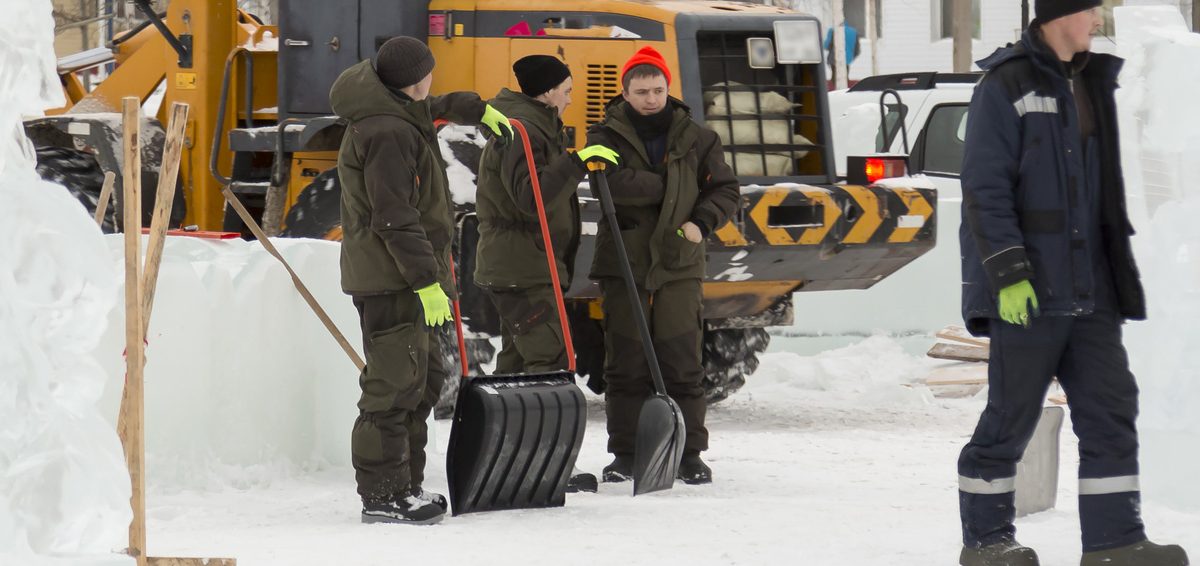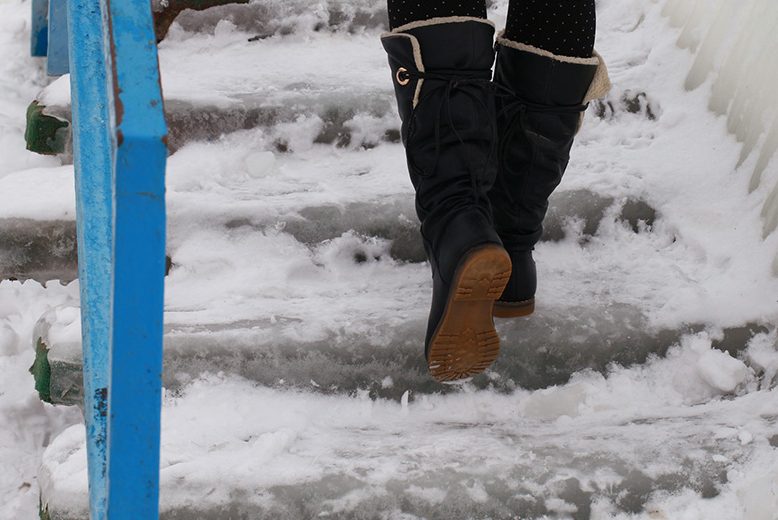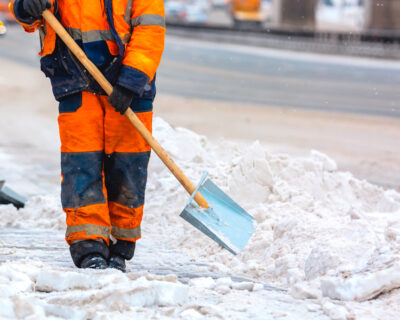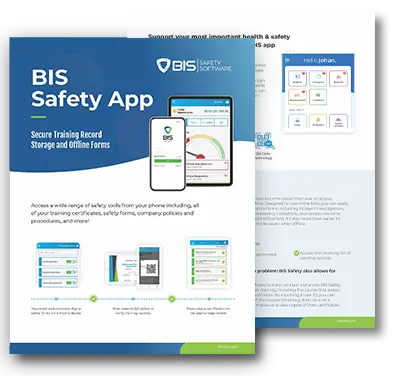
Walking on Icy Surfaces
Ice and snow are a normal part of the winter weather, but the risks they create are often ignored. We can normally walk without thinking about each step as we are used to the friction between our shoes and the ground. When walking on icy surfaces, there is much less friction to keep you stable.
Slips, trips and falls are more common during winter, as a consequence of icy conditions. According to the Centers for Disease Control and Prevention, around one million Americans fall each year while walking on snow or ice, and 17,000 of these injuries are fatal.
Outdoor icy conditions are not always evident; a thick sheet of ice can be seen easily, but in many cases, ice is hidden under the snow. Air humidity can freeze on a walkway as a thin layer, which is difficult to see but slippery enough to make you fall. Do not assume you can step safely on a surface, even if ice and snow have recently been removed.
You can protect yourself by wearing shoes that increase friction. Friction is lowered when walking on ice which is the main risk factor for falling. Some manufacturers of construction safety equipment offer boots that are specially designed for icy conditions. Falls can be greatly reduced in construction sites with safety awareness and the right winter footwear.
Safety Tips for Walking in the Winter
The following are some safety recommendations to prevent trips, slips and falls during winter. These tips can help you prevent a costly hospitalization, or even save your life.
1. Wear Proper Clothing
The type of shoes you wear is very important in icy conditions. To minimize the risk of slips, trips and falls, your footwear should provide as much friction as possible.
- Shoes with rubber or neoprene composite soles provide the best footing when walking on icy surfaces. Plastic and leather soles are more likely to slip.
- Avoid heels completely, since they distribute your weight over a smaller area, and keeping balance with them is more difficult. Shoes with flat soles are preferred for icy conditions.
- Ice cleats can be attached to your shoes for extra safety. Just make sure they are removed when entering a building as they can scratch the floor material and be slippery on tile surfaces.
Personal protective equipment (PPE) should be worn normally in construction projects and other worksites with hazards while adding adequate footwear for winter conditions.
2. Walk Cautiously on Ice and Snow
Slow and well-planned movements can reduce the chance of falling on ice. The opposite also applies; moving fast is very dangerous since you will have more momentum in case of falling. Take your time when walking on icy surfaces, and you can prevent a severe injury.
The idea may sound funny, but falling is less likely if you “walk like a penguin”:

- Spread your feet out partially, to balance your weight over a larger area.
- Always use your front foot to carry your weight, by slightly leaning forward.
- Walk with short and controlled steps, or by shuffling your feet.
When walking, we normally split our weight between both feet. Our brains do it automatically and we are not aware. To avoid falling on icy surfaces, we must consciously change our way of walking. An additional tip is not walking with your hands in your pockets, since your arms can help you maintain balance.
If you cannot keep your balance and falling is unavoidable, try to prevent a direct hit on your bones. To minimize injury, you can try to cushion the fall with your thighs, hips and shoulders. Avoid landing on an outstretched arm, since breaking a bone is very likely in this case. If you happen to fall backwards, bend your chest and neck forward to protect the back of your head. Thick winter clothes can provide additional protection, by absorbing part of the impact.
3. Be Extra Careful in Certain Areas
In some situations, the risks created by icy surfaces are increased. For example, staircases and ramps are very dangerous when covered by ice or snow, and keeping balance can be very difficult. Be careful when you notice melting snow or ice since surfaces surrounding it can become much more slippery. Melting snow and ice can be very dangerous when it occurs at building exits, as you move from a dry surface to a very slippery surface.
After parking your vehicle, inspect the ground outside the door carefully before stepping out. When exiting the vehicle, grab the door frame well for extra support. There is a high risk of falling backward if you are careless, and you could hit the back of your head against the car.
4. Stay on the Designated Path
Avoid taking shortcuts over the snow or other outdoor areas that may hide slippery surfaces. Instead, you should carefully observe the conditions ahead to determine the safest path. For example, when an ice sheet is in plain sight, you can decide where you can step to avoid it.
Distractions such as phone calls and texting should be avoided completely when walking on icy surfaces to stay concentrated. Objects like suitcases and bags can affect your balance, and you should not carry them unless it is completely necessary.
Waking on icy surfaces is risky, but the dangers are often ignored. Unfortunately, this leads to more hospitalizations due to outdoor falls during winter. The best way to prevent falling is by wearing adequate shoes and walking safely. You can also take a specific course on how to walk on icy surfaces, and improve your safety awareness.




































